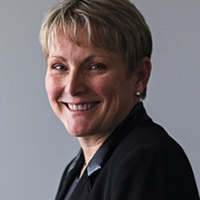
Pat Dunwoody
Executive Director, Canadian ETF Association
In years past, exchange-traded funds (ETFs) have been seen as the upstart little brother to mutual funds. But as anyone who has ever found themselves suddenly looking up to make eye contact with a younger sibling can tell you, little brothers don’t always stay little for long.
As of this year, Canadians have invested a total of $168 billion in ETFs, and 2018 was the first year that the flow of capital into ETFs outpaced the flow into mutual funds. When Executive Director Pat Dunwoody first started at the Canadian ETF Association (CETFA) six years ago, there were only seven ETF providers in Canada. Now there are 35. And consumer interest in ETFs is only continuing to grow.
Investors of all ages are using ETFs to meet their goals
The shift towards ETFs reflects the evolving needs, tastes, and goals of Canadian investors. “We did our first big round of investor research last year,” says Dunwoody, “the two major groupings of ETF investors we found were people in the 25 to 34 age range who are making their first substantial investments, and then also the over-65 cohort who are positioning themselves for deaccumulation. In both groupings, the research showed that ETF investors tend to be people with a higher level of financial literacy who want an active partnership with their financial advisor. These are people who want to truly understand what they are investing in.”
ETFs hold a critical edge over other investments when it comes to minimizing capital gains burdens.
The growing preference for ETFs can also be partly attributed to the market landscape itself. It’s a market that heavily favours vehicles like ETFs, which maintain low fixed fees through passive asset management. “Investors are taking a closer look at fees, especially because market returns haven’t been what they once were,” says Dunwoody. “And of course, when returns are lower, the percentage impact of fixed fees increases.”
And as the market continues to slowly grow after rebounding from the global financial crisis of 2008, ETFs hold a critical edge over other investments when it comes to minimizing capital gains burdens. “In general, ETFs create fewer taxable events than mutual funds,” says Dunwoody. “The way ETFs are structured allows them to expand and contract with minimal capital gains burden. And, unlike mutual funds, the choices and actions of fellow investors in an ETF cannot affect your individual tax liability. When you sell an ETF as an individual, another investor is buying the units. The portfolio is not touched.”
Explore ETFs for greater opportunities
CETFA’s research has shown that interest is especially keen among investors with accounts totalling half a million dollars or more, which is more common in the over-65 age group. However, ETFs are also an appealing option for investors of all profiles who have substantial capital to devote to a new home. But not all are created equal. “As with any investment, it’s very important to inform yourself about the differences between the ETFs that are out there,” Dunwoody explains. “For example, though the trend is for an ever-greater number of ETFs to be designed as buy-and-hold investments, there remain some that are primarily trading vehicles. It’s important to know the difference.”
If ETFs weren’t already on the radar for financially-literate investors and those who advise them, they certainly should be now.


